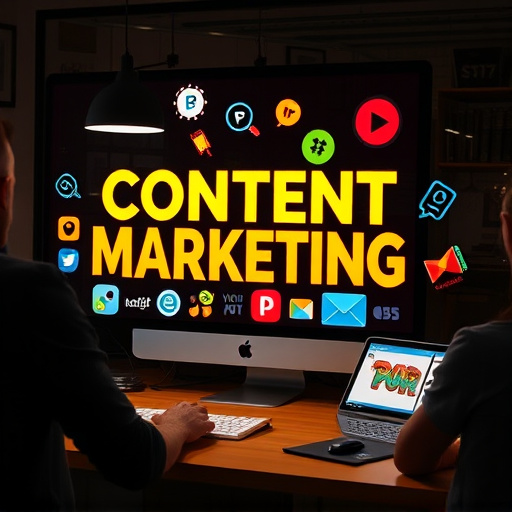Establishing clear project goals and scope is essential for successful marketing materials design. This involves understanding target audiences, defining business objectives, and setting specific, measurable goals like increasing brand awareness. By aligning designs with client aims, monitoring KPIs, following brand guidelines, and ensuring high-quality execution, projects stay on track, enhance brand recognition, and contribute to effective promotional strategies.
In the dynamic realm of marketing, creating compelling materials is essential for engaging audiences. Effective management of design projects ensures success, delivering impactful results that align with business objectives. This article explores best practices for streamlining your marketing materials design process. From establishing clear goals and scope to fostering collaboration and implementing rigorous quality assurance, these strategies will guide you in creating on-brand, high-impact assets on time and within budget.
- Establishing Clear Project Goals and Scope
- – Define objectives and KPIs for the marketing materials design project.
- – Outline the target audience and brand guidelines.
Establishing Clear Project Goals and Scope

Establishing clear project goals and scope is the cornerstone for any successful marketing materials design endeavor. Before initiating a design project, it’s imperative to define objectives that align with broader business aims. This involves understanding who the target audience is, what message needs to be conveyed, and how these designs will ultimately contribute to sales or brand recognition. A well-defined scope ensures every team member is on the same page, minimizing miscommunication and delays.
By setting specific goals, such as creating visually appealing brochures with high-quality finishes that highlight your company’s innovative vehicle protection solutions or designing eye-catching banners with effective heat rejection properties for outdoor events, you can better direct creative efforts. This focus allows designers to deliver marketing materials that not only meet but exceed expectations, making them essential tools in any promotional strategy.
– Define objectives and KPIs for the marketing materials design project.

Before diving into the design process for marketing materials, it’s crucial to establish clear objectives and define key performance indicators (KPIs). This step serves as a compass guiding your entire project. Objectives should be specific, measurable, achievable, relevant, and time-bound (SMART). For instance, if you’re creating a new set of brochures for a client, an objective could be “to increase brand awareness among the target audience by 20% within three months.” KPIs will help track progress towards these objectives. Metrics like website traffic, conversion rates, or social media engagement can serve as indicators of success, ensuring that your marketing materials design project aligns with the business’s overarching goals and delivers tangible results.
Additionally, consider the role of professional installation and high-quality finishes in achieving these outcomes. A professional ppf (print and packaging) installation process ensures accuracy and longevity of the final product, enhancing its overall impact. UV protection, a feature that adds durability to designs, can also be incorporated into the materials to safeguard against environmental factors that might degrade their quality over time. These considerations not only contribute to the aesthetics but also ensure that your marketing materials effectively communicate the intended message for a longer period.
– Outline the target audience and brand guidelines.

Before diving into the design process for marketing materials, it’s crucial to outline the target audience and align with brand guidelines. Understanding your intended audience is key to creating effective visuals that resonate with them. This involves identifying demographics, psychographics, and their unique preferences, behaviors, and pain points. For instance, if you’re designing materials for a tech startup, your audience might be young, digitally savvy individuals seeking innovative solutions.
Brand guidelines are essential for maintaining consistency across all marketing materials design projects. These guidelines outline the brand’s visual identity, including color palettes, typography, imagery styles, and tone of voice. When working with custom vehicle wraps or vinyl wraps, adhering to these guidelines ensures that the final product aligns with the brand’s overall aesthetic and messaging. This consistency builds brand recognition and trust among consumers.
Efficient management of marketing materials design projects involves a strategic approach, from setting clear goals and defining key performance indicators (KPIs) to understanding the target audience and adhering to brand guidelines. By implementing these best practices, marketing teams can streamline their processes, ensure consistent brand messaging, and ultimately create compelling designs that resonate with audiences, driving successful campaign outcomes.














